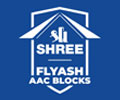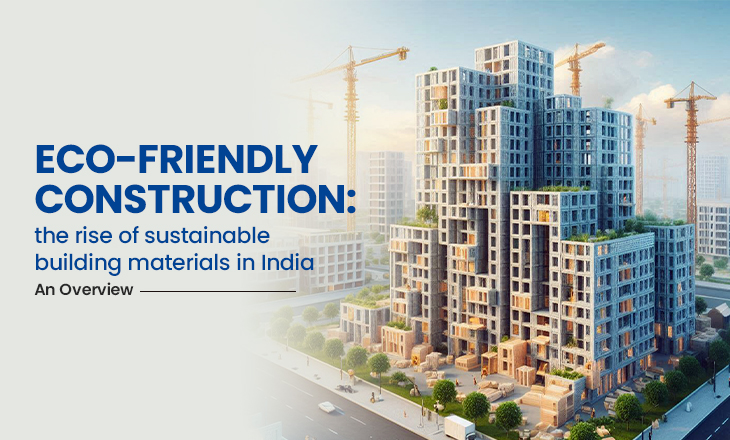With urban growth accelerating, Indian building contractors are increasingly adopting sustainable construction practices to build responsibly and shape a greener future. With India projected to become the third-largest construction market globally by 2025-26, the pressure to build responsibly continues to rise. Sustainable construction not only reduces long-term ecological impact but also aligns with evolving consumer preferences and government regulations. Reflecting this shift, the Indian Green Building Council (IGBC) reports that India surpassed 10 billion sq. ft. of green building footprint by 2023, placing the country among the top three globally for certified green buildings. Here, we share some of the useful insights on the rise of sustainable building materials and eco-friendly construction:
Green Certifications Drive Change
Green certifications play a key role in encouraging this shift. Standards such as IGBC, GRIHA (Green Rating for Integrated Habitat Assessment), and LEED (Leadership in Energy and Environmental Design) help define sustainability benchmarks for construction projects. These certifications promote the use of recycled content, water conservation, energy efficiency, and waste reduction, providing both recognition and regulatory compliance. Projects that meet these standards often benefit from faster approvals, tax incentives, and higher market value. Below is an overview of the key green certifications shaping sustainable construction in India:
LEED (Leadership in Energy and Environmental Design)
LEED is an internationally recognised certification managed in India by the Green Business Certification Inc. (GBCI). It assesses buildings based on energy use, water efficiency, materials, and indoor environmental quality. India, with 8.5 million gross square meters of LEED-certified space, is advancing sustainable urban infrastructure while actively contributing to the United Nations’ 2030 Sustainable Development Goals.
IGBC (Indian Green Building Council)
The IGBC, formed by the Confederation of Indian Industry, offers a broad range of services, including the development of new green building rating systems, certification support, and specialised training programs for sustainable construction. As of October 2024, over 14,511 green building projects in India, covering approximately 12.307 billion square feet, have adopted IGBC ratings.
GRIHA
GRIHA is India’s own national green building rating system, developed by TERI and supported by the Ministry of New and Renewable Energy. It evaluates a building’s environmental performance throughout its lifecycle, with a focus on passive design and resource efficiency.
Government initiatives promoting green building practices
The Indian government has implemented several initiatives to encourage sustainable construction. Government initiatives drive green building practices through regulations, incentives, and certifications. Policies encourage energy efficiency, sustainable materials, and waste reduction. These efforts support energy efficiency, water conservation, and the use of eco-friendly materials. Here’s a brief overview of some of the government initiatives:
Energy Conservation Building Code (ECBC)
The Energy Conservation Building Code (ECBC), launched by the Bureau of Energy Efficiency (BEE), sets minimum energy efficiency standards for commercial buildings in India. It applies to structures with a connected load of 100 kW or more or a contract demand of 120 kVA. The code addresses key components such as the building envelope, lighting systems, HVAC, and electrical infrastructure. By promoting efficient design and technology, ECBC aims to significantly reduce energy consumption in the construction sector.
Support for renewable energy integration
The Ministry of New and Renewable Energy (MNRE) functions as the primary government body overseeing all aspects of renewable and alternative energy in India. It plays a key role in formulating and implementing policies, schemes, and programs that promote the adoption of renewable energy technologies across the country.
A major focus of the MNRE is the promotion of clean energy systems. This includes support for solar photovoltaic (PV) panels, especially through initiatives that encourage rooftop solar installations via subsidy schemes and net metering policies. Also, the ministry offers incentives for the adoption of solar water heating systems in both residential and commercial buildings. The integration of these renewable energy systems into green buildings plays a crucial role in reducing dependence on conventional energy sources. This not only supports energy efficiency in the built environment but also contributes to India’s broader renewable energy targets, including those under the National Solar Mission and related clean energy initiatives.
Benefits of using locally sourced materials
Builders are increasingly turning to locally sourced materials as part of sustainable construction methods. This approach offers multiple benefits, both environmental and economic. It reduces the need for long-distance transportation, which cuts fuel use, emissions, and packaging waste. Locally available materials also suit India’s diverse climate zones. These materials improve thermal performance and increase the durability of buildings. Beyond environmental benefits, the use of local materials supports regional economies. It creates jobs, strengthens supply chains, and raises income for small and medium enterprises. Builders also benefit from faster procurement, shorter lead times, and fewer delivery delays, which improve project timelines and efficiency. Indigenous materials also help preserve India’s architectural heritage. They reflect local identity, culture, and craftsmanship.
Fly ash AAC blocks as a smart alternative to traditional bricks
Fly ash AAC blocks contribute significantly to energy efficiency in buildings. Their high thermal insulation helps regulate indoor temperatures by maintaining a stable internal climate. This reduces the need for artificial heating in winter and cooling in summer, which lowers electricity consumption and energy bills. The blocks contain tiny air pockets that act as natural insulators, further enhancing thermal performance. In multi-storey buildings, their lightweight nature reduces the structural load – this allows for more efficient design and less reliance on energy-intensive materials. When used in combination with passive design strategies, fly ash AAC blocks improve building performance and support long-term energy savings.
As a trusted fly ash AAC block company, we remain committed to delivering high-quality, sustainable building materials that meet modern construction standards.
The role of recycled steel and metal in eco-friendly construction
Recycled steel and metal play a key role in sustainable construction in India. Steel is fully recyclable and keeps its strength through many reuse cycles. This reduces the need for new raw materials, saves energy, and lowers carbon emissions during production. It also helps reduce construction waste. Recycled steel is strong, long-lasting, and suitable for structures, roofs, and wall coverings. Its use improves material efficiency and supports better resource use. As India focuses more on green buildings, recycled steel helps meet sustainability goals and supports the move towards a circular economy.
Use of solar reflective tiles and energy-efficient roofing
Solar reflective tiles and energy-efficient roofing play an important role in reducing heat gain and improving indoor comfort. These materials reflect a larger portion of sunlight, which lowers roof surface temperatures and reduces the need for artificial cooling. This results in lower energy use, especially in hot regions, and leads to long-term cost savings. Energy-efficient roofing systems improve the thermal performance of buildings and align with sustainable construction goals. By lowering the urban heat island effect, they provide benefits not only to individual homes but also to the surrounding environment.
The future of sustainable construction and building materials in India looks promising. Growing awareness, supportive policies, and advances in technology continue to drive the shift towards eco-friendly practices. With increased demand for energy-efficient designs and green-certified buildings, India stands well-placed to lead in sustainable development.

